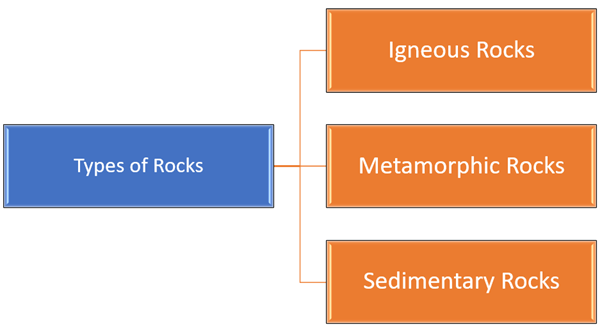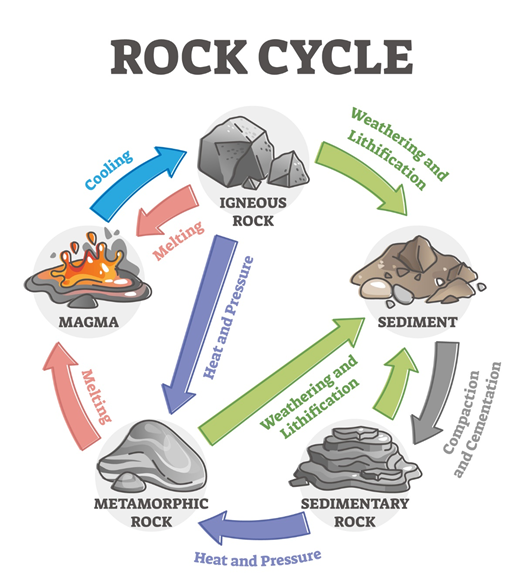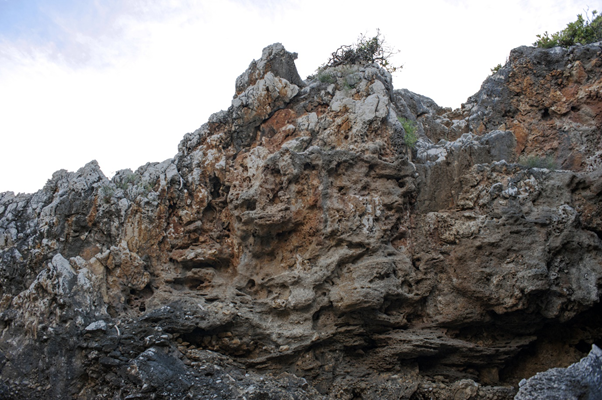Definition
Related Definitions
Rock Formation
Source: © Feel2 | Megapixl.com
In geological reference, a rock is an aggregate of naturally occurring minerals. The geological material present in the rocks may include fragments of fossils, mineral crystals, inorganic non-minerals etc.
A rock is characterised based on its chemical composition and the way a rock is formed. Rocks and soil form the outermost surface of the earth, which is known as the crust. Rock can be classified into three main types depending on its origination and composition. There are three main types of rock found in the earth: Igneous, Metamorphic, and Sedimentary rocks.
What are the different types of geological rocks?
Rocks can be classified on two grounds. The first and most widely accepted classification scheme is based on the origination of the rock, and the other one on the crystal and grain size of the rock. Based on the process of formation, rocks can be classified as igneous, sedimentary and metamorphic/ Let us discuss them one by one.

Source: Copyright © 2021 Kalkine Media
- Igneous Rocks: Igneous rocks are formed by cooling magma. When molten magma present under the surface of the earth cools and hardens, an igneous rock form. There are three main types of rock found in the earth: Igneous, Metamorphic, and Sedimentary rocks. The crystals of the igneous rocks are in an angular shape, but when lava cools quickly, no crystals are formed. These are hard rocks that are not crushed like metamorphic rocks or worn as sedimentary rocks.
- Metamorphic Rocks: Metamorphic rocks are formed by the intense pressure and temperature of the earth. The pressure applied by the earth on any rock present below the earth's surface at higher temperature can alter the metamorphism of the rock. Rock's texture, composition, shape of crystals and colour are changed due to the intense pressure applied by the earth on rocks. Metamorphism can happen to any type of rock, including sedimentary, igneous or even metamorphic rock.
- Sedimentary Rocks: Sedimentary rocks are formed by fragments of pebbles, shells, sands and other fragmented materials. The sediments get accumulated in the form of layers over a period of time and subside due to their own weight and overburden. These layers of sediments undergo some chemical changes on subsidence due to change in pressure and temperature conditions. The sediments become cemented together to form a rock, known as sedimentary rock. These rocks are the best place to search for hydrocarbons.
Summary
- A rock is an aggregate of naturally occurring mineral that includes the basic unit of the solid earth's geological materials in geological terms.
- A rock can be characterised based on its formation process and its crystal and grain size.
- Based on the process of formation, rocks can be classified into three main categories, viz. igneous, sedimentary and metamorphic.
Frequently Asked Questions (FAQs):
How are these rocks formed?
The formation of each type of rock is interlinked with another category of rocks. Rocks change very slowly, but some catastrophic events like floods or volcanic eruptions can drastically change the rate. The formation of rocks can be well explained by the basic steps involved in a rock cycle. Let us have a look at all the steps of a rock cycle to understand the rock formation process.

Source: © VectorMine | Megapixl.com
- Weathering: All type of rocks including, igneous, sedimentary and metamorphic, present on the surface of the earth, are broken by the actions of water, air and wind. The process of breakdown of rocks is known as weathering. Blowing wind carries sand particles with it that works like sandpaper and wears the outer surface of rocks. Flowing water carries rocks with it that gets chipped off due to abrasive action, leaving smooth pebbles into the river or flowing channel. Water breaks down large rocks by weathering action. Water enters into the cracks present in the rocks, freezes and breaks the rock due to the expansion of water on freezing.
- Erosion and Transportation: The large rocks are broken down into smaller pieces and carried away by flowing water and blowing wind. The process of transportation of these fragmented particles is known as erosion.
- Deposition: As the force of the flow of the river becomes slow, the fragmented particles tend to settle at the bottom of the river forming a layer of sediments.
- Compaction and Cementation: As the layer of sediments pile up, the overburden and pressure on the lower deposited layer of sediments make them compact and dense. Prolonged compaction coupled with the action of dissolved minerals which acts as a cement to bind particles, the sediments are converted into sedimentary rocks.
- Metamorphism: The prolonged exposure to intense temperature and pressure coverts these sedimentary rocks into metamorphic formations. Existing rocks that are heated up and squeeze under extreme conditions are converted into metamorphic rocks.
- Rock Melting: Metamorphic rocks meltdown to form magma at higher depths of the earth. As soon as a volcanic eruption takes place, magma flows outside the surface of the earth. On cooling and hardening, it becomes an igneous rock. On the formation of igneous rock, again, the process of weathering and erosion starts.
What is the importance of rocks?
The use of rocks has had a huge contribution to the technological and cultural advancement of human beings. The mining of rocks for the extraction of metals and their usage for the construction of buildings are among the most important uses of rocks to advance human beings. Before introducing advanced construction materials, rocks were used to construct bridges, buildings, houses, palaces, etc.
The recovery of base metals, coal, petroleum, precious metals, and other significant minerals from rocks are among the utmost advantage of rock mining. Mining of rocks and metals has been carried out since prehistoric times. However, the modern mining process incorporates a commercial viability check before the commencement of the activity. The mining process is also responsible for significant environmental pollution issues.

